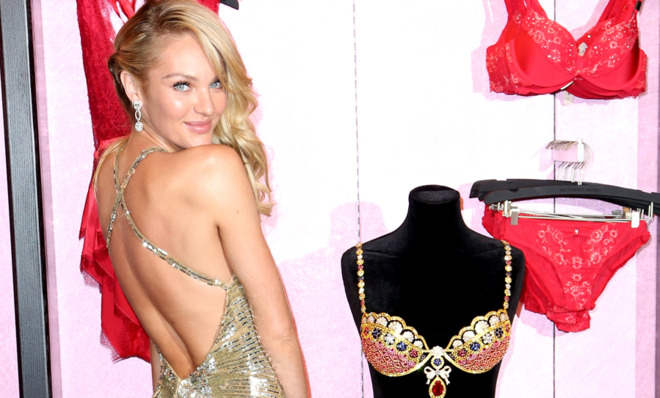Hemlines, diamond-encrusted bras, and other dubious yet stylish economic indicators
Victoria's Secret's Fantasy Bra may say more about consumer confidence than you think

The hemline index
About 100 years ago, when John Maynard Keynes was revolutionizing macroeconomic theory, a lesser-known economist, George Taylor, was promulgating a theory of his own: That the length of women's hemlines move up and down in unison with the stock market. When stocks were high, ladies showed more leg, he said. And when stocks dropped, hems fell accordingly.
Taylor theorized that during the Roaring Twenties, women started buying shorter skirts so they could show off their pricey silk stockings. In bad years, when they were forced to cut back on wardrobe extras, women wore less glamorous stockings — or none at all — and covered their legs with longer skirts.
The Week
Escape your echo chamber. Get the facts behind the news, plus analysis from multiple perspectives.

Sign up for The Week's Free Newsletters
From our morning news briefing to a weekly Good News Newsletter, get the best of The Week delivered directly to your inbox.
From our morning news briefing to a weekly Good News Newsletter, get the best of The Week delivered directly to your inbox.
For such an un-scientific theory, the hemline index has drawn plenty of academic attention over the years. The most exhaustive work on the subject may be that of Marjolein van Baardwijk and Philip Hans Franses of the Econometric Institute Erasmus School of Economics, says CNBC's John Carney. The pair contrasted the monthly data on hemlines from 1921 to 2009 with market data from the National Bureau of Economic Research. Their findings:
Franses and Baardwijk couldn’t find any evidence that hemlines predict economic performance, but they did find that economics predicts hemlines with a three-year to four-year delay. Which is to say, about three years after the economy goes into a recession, hemlines plunge toward the ankle. [CNBC]
Men's ties
Women say you can learn a lot about a man by looking at his shoes. But for some market watchers, the real telltale signs are in the tie, the sales and width of which are theoretical economic indicators.
The sales theory goes like this: When the economy takes a nose dive and layoffs start climbing, men suddenly become very serious about appearing professional and buttoned-up at work. This reportedly materialized in 2007, when sales of ties in the U.K. spiked following rumors of mass layoffs.
A free daily email with the biggest news stories of the day – and the best features from TheWeek.com
As far as width is concerned, during past periods of economic strife, tie-makers would slim down their styles to save material.
The Victoria's Secret Fantasy Bra
Here's a new one: Each year at the Victoria's Secret runway show, the brand presents a "Fantasy Bra" — a jewel encrusted undergarment with an unbelievable, multi-million-dollar price tag. This year, supermodel Candice Swanpoel wore an 18-karat gold piece with a 52-karat, pear-shaped ruby, and more than 4,000 other precious gems.
Victoria's Secret has been making Fantasy Bras since 1996, and CNBC says the price of the bra has "tracked the S&P 500 higher and lower from 1996 to 2005 (with the exception of 2003) and again in 2009 and 2013."
This year's bra was the most expensive one since 2005, when it was $12.5 million. In 2009, in the depth of the recession, the bra was a measly $3 million. The company tracked the changes on a chart, which you can view here, but it's not particularly surprising. During times of economic stress, fewer wealthy people have an extra million to spend on really nice underwear.
Color
In the spring of 2010, with the U.S. economy just starting to crawl back from the lowest point of the recession, retailers stocked their showrooms with bright pink, green, coral, and yellow: The first flash of color in almost two years. The New York Times at the time reported that the new colors coincided with an explosion of pent-up demand for new clothes. Retail sales rose 11.8 percent in one week that month, the largest gain in a decade. Analysts said it was no surprise:
Marshal Cohen, the chief analyst for the market research firm NPD Group, even interprets the resurgence of multihued designs as an indicator of recovery. “Among the first things to be successful coming out of a recession are lively colors and patterns,” he said. [The New York Times]
Carmel Lobello is the business editor at TheWeek.com. Previously, she was an editor at DeathandTaxesMag.com.

